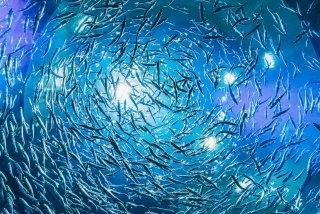
When we purchase food products, most of the time we don't stop and think from where that food item came and how it is made. When it comes to buying fish, we instantly assume it came from some ocean or lake or may have been raised on a fish farm. Fish is an excellent source of nutritious protein that also has other nutrients like omega-3 Fatty acids which improve our heart health and lower our blood cholesterol level. Farmed fish has been playing an essential role in meeting global protein demands.
Since we all need sustainable food products and even packaging, have you ever asked yourself what is sustainable fish farming and how does it impact our planet? Have you ever thought about being part of this movement? Perhaps never before, but if you are aiming to start a sustainable fish farm, you are already a step ahead of many. In this article, we will guide you through the things you need to know about starting up an eco-friendly fish farm.
What is Eco-Friendly Fish Farming?
Ecological fish farming is quite a complex subject, similar to organic seafood. When it comes to defining what sustainable fish farming is, there is no hard and fast definition to be found. Commonly, fish farming is called aquaculture. The sustainable part is arguable, as not all farms follow the same practices and disciplines. Unfortunately, many disagreeable practices are associated with fish farming and such methods don't really help the sustainability factor. However, there are many fish farms such as Global Salmon Initiative that are reaching the highest levels of environmental and social performance through sustainable farming.
Aquaculture fish farms have become one of the fastest-growing industries for producing food. They are basically out-pacing wild-capture fisheries that have lagged behind due to fish depletion. Even with all the laws and fishery management plans, wild-capture fisheries fail to keep up with the demand. It is the reason the food industry is turning to fish farms to keep up with the demand. Even though the industry has turned to fish farming, sustainable fish farming is yet to be implemented fully. Here is how you can start an eco-friendly fish farm to contribute to the environment.
How To Start an Eco-friendly Fish Farm Business
First things first: you will need to have some basic knowledge regarding raising fish. Plus, knowing the business side of farming is equally essential. Now, when it comes to raising fish, you need to have proper space. If you are starting your business from home on a small scale, they can be raised in any fish tanks, tubs, containers, and even in barrels. Conversely, if you plan to begin on a bigger level, you will have to have fish ponds to raise them in. Moreover, you'll need to acquire a good knowledge of fish and aquaculture. If you possess this knowledge, then chances are that you'll succeed in your fish farm business.
Equipment You'll Need
If you are starting a home-based fish farm, you can dig a fishpond in your backyard or get your hands on fish tanks or containers for indoor fish farming. You'll need to acquire the water from a reliable source. For large scale pond-based fish farming, you'll require the additional equipment listed below.
Pumps
Aeration Devices
Net or Seine Reels
Aquarium or fish tank
Water testing equipment
Handling and grading equipment
Things You Can Do to Make Aquaculture More Sustainable
Integrate rice-and-fish farming
Recirculate aquaculture systems
Use locally caught fish as feed
Involve women in aquaculture
Strategies to Follow for the Right Aquaculture Growth
Invest in technological innovation and transfer
Apply approach within the law to reduce fish disease and water pollution
Shift incentives to reward sustainability
Influence the latest information technology
© 2025 NatureWorldNews.com All rights reserved. Do not reproduce without permission.





